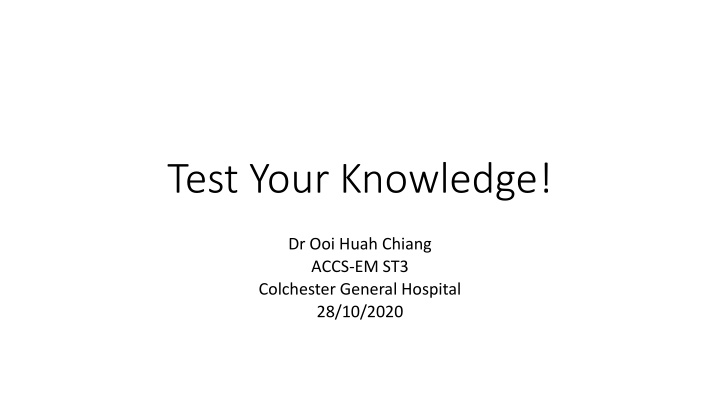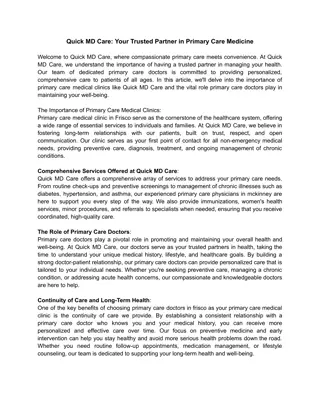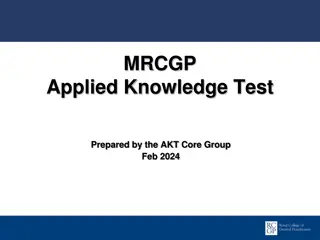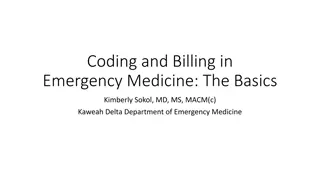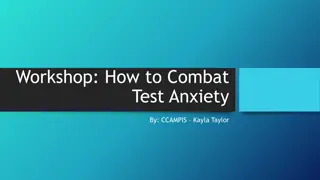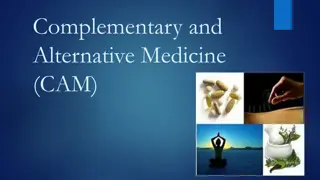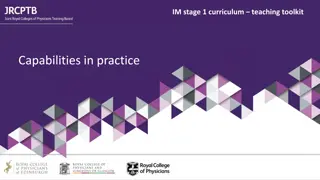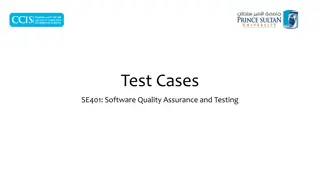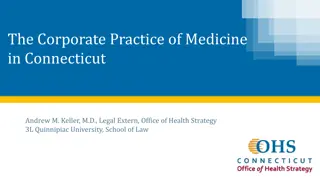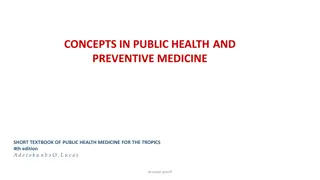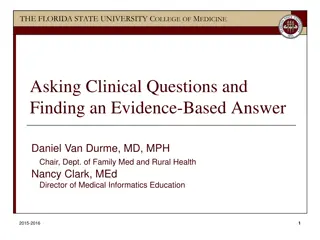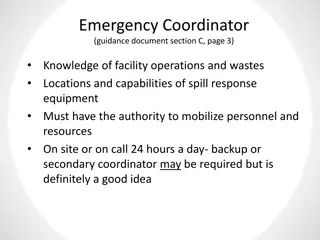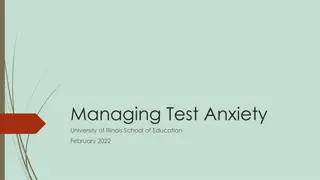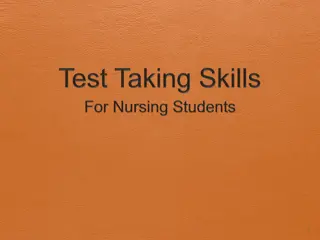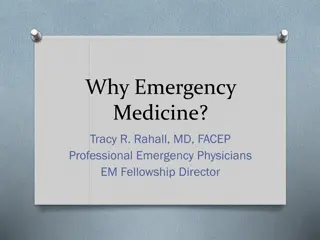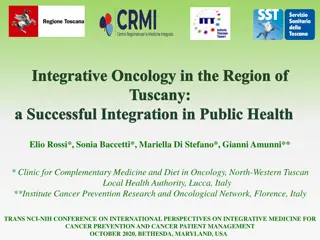Test Your Knowledge in Emergency Medicine: FRCEM Primary Practice Questions
Enhance your knowledge with FRCEM Primary practice questions focusing on applied basic science topics such as Anatomy, Physiology, Pharmacology, Microbiology, Pathology, and EBM/Statistics. Test scenarios cover clinical cases, nerve injuries, fractures, and more to help you prepare effectively for emergency medicine examinations.
Download Presentation

Please find below an Image/Link to download the presentation.
The content on the website is provided AS IS for your information and personal use only. It may not be sold, licensed, or shared on other websites without obtaining consent from the author.If you encounter any issues during the download, it is possible that the publisher has removed the file from their server.
You are allowed to download the files provided on this website for personal or commercial use, subject to the condition that they are used lawfully. All files are the property of their respective owners.
The content on the website is provided AS IS for your information and personal use only. It may not be sold, licensed, or shared on other websites without obtaining consent from the author.
E N D
Presentation Transcript
Test Your Knowledge! Dr Ooi Huah Chiang ACCS-EM ST3 Colchester General Hospital 28/10/2020
FRCEM Primary 180 Single-Best Answer Questions on applied basic science Blueprint: Anatomy x60 Physiology x60 Pharmacology x27 Microbiology x18 Pathology x9 EBM/Statistics x6
Q1 - A 21 year old male stepped on a metallic shard at work. You examine the plantar aspect of his foot and believe only the first layer is involved. What structure may be involved in this injury? A. Flexor digitorum brevis B. Plantar arterial arch C. Dorsal arterial arch D. Peroneus longus E. Tibialis posterior
Explanation RCEM Basic Science Curriculum expects candidates to know: The plantar foot has 4 layers The long flexor tendons (FDL, FHL) lie within the second layer Tendons of tibialis posterior and peroneus longus are part of the fourth layer The neurovascular plane lies between the first and second layers So the correct answer to this question lies in knowing only what RCEM needs you to know
Flexor Hallucis Longus Flexor Digitorum Longus Peroneus/Fibularis Longus Tibialis Posterior Images taken from orthobullets
Q2 - A 31-year old man complains of knee pain after colliding with a slow moving car when he was jogging. Limb X-rays show a fracture at the neck of fibula. Which nerve is likely to be damaged? A. Sciatic nerve B. Tibial nerve C. Common peroneal nerve D. Sural nerve E. Saphenous nerve
Explanation The common peroneal nerve crosses the fibular neck and is susceptible to injury from a fibular neck fracture, the pressure of a splint or during surgical repair. Common peroneal nerve injuries may cause foot drop (paralysis of ankle dorsiflexors) and loss of sensation of dermatomes L4-S2
Q3 - A 60-year-old lady has come in with worsening left hip pain after a fall where she did not seek medical attention. X-ray confirms a displaced fracture of the femoral neck with a flattening of the femoral head. An injury to which artery is most likely to have contributed to this? A. Artery to ligamentum teres B. Medical femoral circumflex artery C. Lateral femoral circumflex artery D. Femoral artery perforators E. Superior gluteal artery
Explanation MFC is the main source of arterial supply to the femoral head MFC gives off the retinacular arteries of the femoral neck and is often disrupted in displaced hip fractures Artery to ligamentum teres is significant for femoral head in paeds but not adults Other arteries listed also contribute blood supply to various areas of the hip
Image Source: https://www.cureus.com/articles/ 13561-osteonecrosis-of-the- femoral-head-etiology- investigations-and-management
Q4 - You are examining a patient who is complaining of back pain and left lower limb numbness and weakness. You notice he has an absent ankle reflex. Which nerve roots supply this particular reflex? A. L1,L2 B. L3,L4 C. L5,S1 D. S2,S3 E. S4,S5
Explanation Ankle reflex - S1 Knee reflex - L4 Biceps reflex - C5,C6 Triceps reflex - C7
Q5 - You have obtained a urine sample from a 50-year-old male complaining of frequent urination. Urine dipstick shows 4+ glucose, and 1+ ketone. Where is the site of glucose reabsorption in the nephron? A. Collecting duct B. Ascending loop of henle C. Descending loop of henle D. Proximal convoluted tubule E. Distal convoluted tubule
Explanation Virtually all glucose is reabsorbed in the PCT of nephron by a special transporter The reabsorption limit is exceeded when blood glucose is >11.1mmol/L
Q6 - You are having difficulty bringing down the blood pressure of a 65- year-old man who is otherwise asymptomatic. Which structure contributes most to systemic vascular resistance? A. Arteries B. Arterioles C. Capillaries D. Venules E. Veins
Explanation In most patients, SVR is regulated mainly by changes in arteriolar tone. This helps regulate blood pressure and flow velocity from arteries into capillaries
Q7 - You have started a patient on ramipril for cardioprophylaxis following his acute myocardial infarction. He returns a few days later with a persistent dry cough. Which substance is responsible for this phenomenon? A. Histamine B. Serotonin C. Dopamine D. Bradykinin E. Nitrous oxide
Explanation Angiotensin-converting enzyme also breaks down bradykinin ACE-inhibitors block the function of ACE and cause bradykinin buildup Bradykinin induces bronchoconstriction and inflammatory response in lung, hence producing a cough.
Q8 - You are resuscitating a hypotensive patient which you suspect is having an Addisonian crisis following prolonged steroid use. Which factors do not stimulate aldosterone production? A. Atrial stretch receptors B. Decreased serum sodium C. Alkalosis D. Increased serum potassium E. Angiotensin II
Explanation Aldosterone secretion is primarily stimulated by: Hyperkalemia (strongest regulator) Hypovolaemia (detected primarily via atrial stretch receptors) Angiotensin II levels (which via RAA-S is stimulated by hyponatremia) Acidosis
Q9 - A 50-year old man presents to you with jaundice, progressive weight loss and abdominal swelling. He tells you that he was diagnosed with hepatitis many years ago, but did not follow up for treatment. An abdominal ultrasound shows multiple hypoechoic lesions suggestive of tumours with no obvious cirrhosis. Which is the most likely causative organism? A. HIV B. Hepatitis A C. Hepatitis B D. Hepatitis C E. CMV
Explanation Hepatitis C particularly known to cause hepatocellular CA without cirrhosis.
